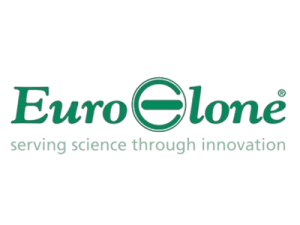DSS: Redefining Biotechnology & Life Science in India
- About Us
- Products & Services
PRODUCTS & SERVICES
- Applications & Specialities
All Applications & Specialities
- Brands
- Contact Us
-

-
 0
0
- ☰
- About Us
- Products & Services
- Applications & Specialities
- Brands
- Brand - Life Sciences
- 3i
- ABBERIOR INSTRUMENTS
- Abbott Molecular
- ADS Biotec
- APPLIED SPECTRAL IMAGING
- BioAir Tecnilabo
- DAKO (AGILENT)
- Eden Tech
- Elveflow
- ENTROGEN
- EUROCLONE
- EVIDENT
- Genea
- Hamamatsu Photonics
- Invivoscribe
- MASTER DIAGNOSTICA
- MBF BIOSCIENCE
- Medical Tek Co. Ltd
- MILESTONE MED SRL
- Molecular Machines & Industries
- MRC HOLLAND
- NeoDx
- Onward Assist
- Profound
- SCIENTIFICA
- Seqlo
- µCyte
- Brand - Industrial
- Brand - Life Sciences
- News & Events
- Career
- Contact Us
- Testimonial
- Blogs
- R&D
- CSR

Microscopy in Life Sciences
BY DSS Imagetech Pvt Ltd December 8, 2023
Microscopy in Life Sciences
An essential tool in the life sciences is microscopy. It has transformed how we learn about and comprehend everything around us, from the tiniest cells to the biggest living things. Cutting-edge discoveries and advancements in areas like medicine, genetics, and neurology have been made possible by the capacity to examine and analyze structures and processes at the microscopic level. This blog will go into the interesting field of life sciences microscopy, examining the many kinds of microscopes, their uses, and the effects they have had on our comprehension of the natural world. Come along on a trip as we explore the hidden facets of life as seen through a microscope.
Historical Background
The first compound microscope was created by Dutch scientist Antonie van Leeuwenhoek in the 17th century, beginning the history of microscopy in the biological sciences. With the use of his microscope, Leeuwenhoek was able to see and catalog several previously undiscovered species, such as bacteria and protozoa.
When electron microscopy was developed in the middle of the 20th century, it opened up new fields of study and allowed researchers to examine the atomic structure of macromolecules like proteins and nucleic acids.
As new methods and technology allow scientists to see and analyze the natural world in ever-greater detail, microscopy nevertheless plays a crucial role in the biological sciences today.
Applications of Microscopy in Life Sciences
Microscopy has a wide range of uses in the biological sciences and has significantly advanced our understanding of the natural world. Let’s discuss the applications of microscopy in various fields of life sciences:
- Microscopy has been crucial in helping us understand cell biology because it enables real-time observation of the structure and behavior of cells by researchers. Comprehension of cellular processes like mitosis and cell migration has been gained via the use of techniques like fluorescence microscopy to investigate subcellular components like organelles and the cytoskeleton.
- Microbial ecology: The structure and behavior of microbial communities in their natural settings have been studied using microscopy, revealing information on their ecology and diversity. Microbial communities in soil, water, and the human microbiome have all been studied using methods like fluorescence in situ hybridization (FISH).
- Neuroscience: In the field of neuroscience, microscopy has greatly advanced our knowledge of the brain and nervous system. Insights into brain function and neurological illnesses have been gained via the study of the structure and function of neurons and neural networks using methods like confocal microscopy and two-photon imaging.
- Developmental biology: The ability to view organisms’ growth in real-time thanks to microscopy has revolutionized this field of study.
Challenges and Limitations of Microscopy in Life Sciences
Although microscopy has been a crucial instrument in the field of life sciences, it is not without its drawbacks and difficulties. The followings are some difficulties and restrictions with microscopy in the biological sciences:
- Resolution: Resolution is one of the main drawbacks of microscopy. The resolution limit of conventional light microscopy is around 200 nanometers, making it challenging to view objects smaller than this. Although super-resolution microscopy techniques have been created, some researchers cannot use them since they are sometimes expensive and call for specialized equipment.
- Imaging artifacts: A number of factors, including sample preparation, equipment constraints, and image processing, can lead to imaging artifacts. These artifacts may provide faulty data, which may result in incorrect inferences about the researched biological systems.
- Sample preparation: For reliable microscopy findings, a sample must be properly prepared. While certain samples may be time-consuming and challenging to prepare, this might limit the scope of particular structures or processes that can be seen.
- Field of view restriction: Microscopy methods frequently have a field of view restriction, making it challenging to monitor huge structures or processes. This can be especially hard when researching intricate biological systems like the brain.
- Expensive procedure: Some microscopy techniques, such as electron microscopy, can be expensive and require specialized equipment and facilities. This can limit access to these techniques for some researchers and institutions.
- Phototoxicity: High-intensity light may be phototoxic to cells and tissues, which is why some microscopy methods, like fluorescence microscopy, employ it. This can cause cell death or damage, which might impair the reliability of the findings.
Recent Advancements in Microscopy Techniques
The resolution, speed, and accuracy of observations have all been significantly improved by recent developments in microscopy methods. Below are some recent developments in microscopy approaches:
- Single-particle tracking: It is a method that employs high-speed microscopy to follow particular particles in real-time, such as molecules or viruses. The method has been applied to research the behavior of viruses and cells, revealing details about cellular dynamics and disease mechanisms.
- Stimulated Raman scattering (SRS) microscopy: Laser light is used in the label-free technique known to see certain molecules in biological materials, such as lipids or proteins. The method has been applied to research cellular metabolism and has the potential to provide fresh light on the development of illness.
- Light-sheet microscopy: Using a thin sheet of light to illuminate a material, this method enables scientists to view huge objects, such as embryos or tissues, in real time. The method has transformed the study of developmental biology and produced a fresh understanding of how organisms grow and develop.
- Cryo-electron microscopy (Cryo-EM): Cryo-EM has become a potent method for capturing molecular images of biological materials. To image samples that have been flash-frozen to retain their structure, the method employs an electron beam. Unprecedented insights into the structure and operation of macromolecules, such as proteins, have been offered by cryo-EM, which has improved medication development.
Future of Microscopy in Life Sciences
The future of microscopy in the biological sciences is bright as technology develops, with possible uses and developments that might completely transform the industry.
Super-resolution microscopy is one potential path for the development of microscopy. When it comes to seeing structures that are smaller than the wavelength of light, conventional microscopy methods have their limits. The ability to observe structures at the nanoscale level has been enabled by the advent of super-resolution microscopy methods like STED and STORM. These methods might offer fresh perspectives on cellular and molecular functions and could be especially helpful in the research of disorders that impact these components.
Live-cell imaging is another area where microscopy is improving. Real-time viewing of living cells and organisms is now feasible, giving a more dynamic knowledge of biological processes. Fluorescence microscopy and confocal microscopy are two examples of live-cell imaging methods that enable researchers to follow the movement of molecules, watch cellular division, and investigate interactions between cells.
Another field that might have a significant impact on life sciences in the future is multimodal microscopy. Combining several microscopy methods, including electron, X-ray, and fluorescence microscopy, may offer researchers a more thorough knowledge of biological processes and structures.
Microscopy in the biological sciences has a bright future, and exciting new advancements are anticipated in the years to come
Latest Articles
Harnessing Molecular, Cytogenetic and NGS Technologies for Better Outcomes In Light of Childhood Cancer Awareness Month
BY DSS Imagetech Pvt Ltd September 22, 2025
Written by Dr. Hitarth Patel, Application Specialist Every September, the world comes together for Childhood Cancer Awareness Month, represented by the gold ribbon. This month is dedicated to raising awareness, supporting families, and driving research to fight the leading cause of disease-related death among children. While tremendous progress has been...
Read MoreHow Delhi’s Biotech Industry Is Evolving with Cutting-Edge Research Tools
BY DSS Imagetech Pvt Ltd September 22, 2025
In the heart of India’s capital, a quiet revolution promises to change the future of medicine, agriculture, and sustainable living. What was once a landscape dominated by traditional industries is now a vibrant ecosystem of scientists, entrepreneurs, and government initiatives all working together to push the boundaries of biotechnology. Delhi’s...
Read MoreApplied Spectral Imaging: Unlocking New Insights in Medical Diagnostics and Research
BY DSS Imagetech Pvt Ltd September 12, 2025
What if the most crucial details of a patient’s diagnosis were hidden in plain sight, invisible to the naked eye? The world of medical diagnostics, especially in areas like cancer and genetic disorders, has long relied on the human eye and traditional microscopy. But as diseases become more complex and...
Read More


























